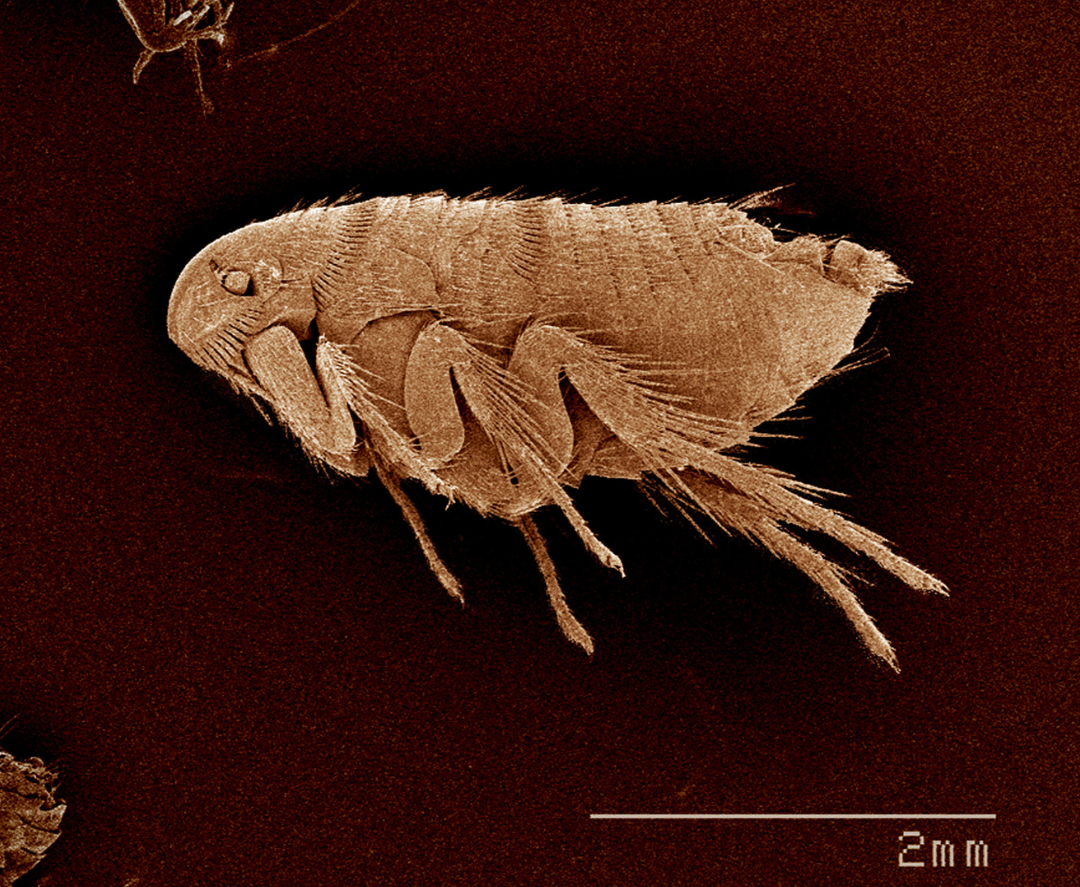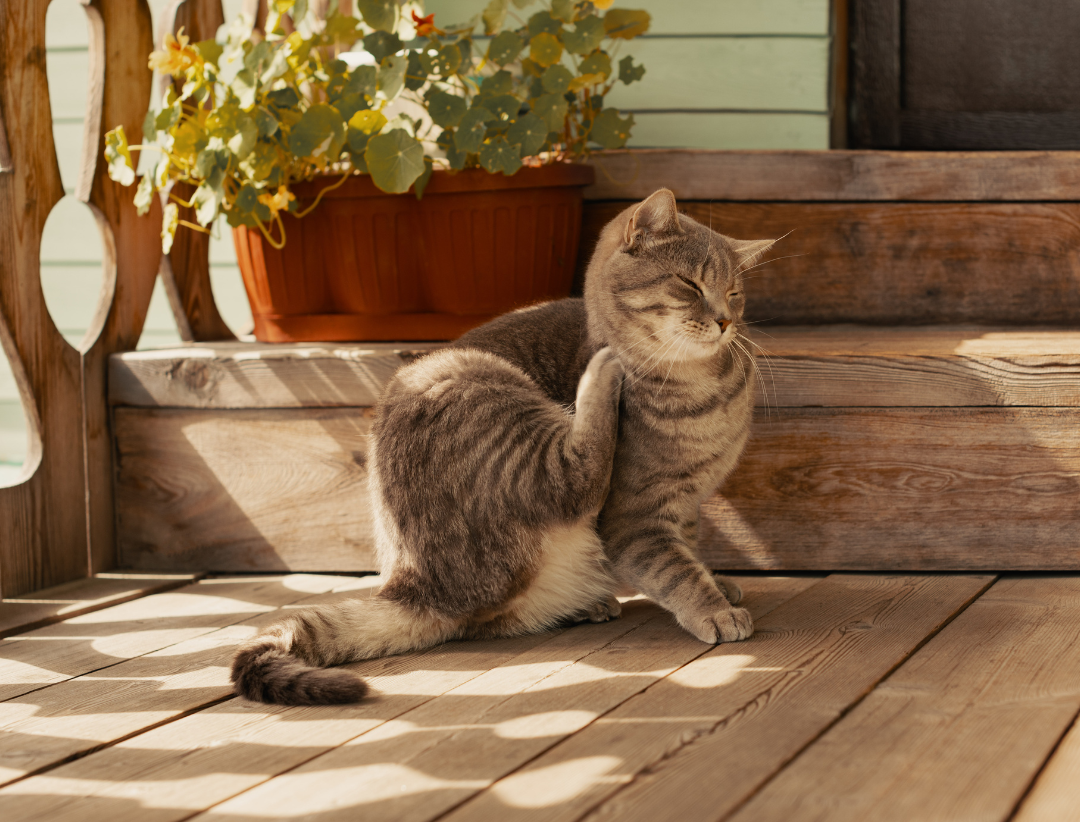The word ‘flea’ technically means any species of insect in the order ‘siphonaptera’, which is a combination of two Latin words, ‘siphon’ and ‘aptera’, the first meaning tube, the second meaning wingless. So, a flea is a wingless insect with a tube for a mouth. “Flea” can also refer to a drummer from an American rock band, but that isn’t who we’re talking about in this blog!
The fleas that we are specifically focused on are the dog flea (Ctenocephalieds canis) and the cat flea (Ctenocephalieds felis). Despite the names, these two fleas are not completely specific to a host species, meaning both types of flea can be found on dogs or cats. Fleas, like butterflies, undergo complete metamorphosis as they grow to adulthood. The adult fleas lay eggs, which then hatch into small grub-like larvae, these larvae spin a cocoon around themselves to enter their pupal stage, and finally when the time is right the pupae emerge as new adult fleas.
Understanding this lifecycle is important in protecting our pets from these voracious vermin. The adult fleas are the primary stage of life that live on our pets. They spend their time feeding on blood, reproducing, laying eggs, and defecating, all on their host. A single adult female will produce 20-30, microscopic eggs, per day for the rest of her life, but tricky news is that the eggs are not adhesive and ~70% of them fall off of the host within 8 hours of laying eggs.

The larval fleas feed primarily on the feces of the adult fleas (also constantly falling down off of the infested animal) and molt 2-3 times over the course of 9-200 days before spinning their cocoons. While the larvae are relatively sensitive to cold temperatures and dry weather, the cocoons are resistant drying out, freezing, and even insecticides. This makes environmental management of the flea infestation by far the most difficult part.
Cocoons can hatch within about 3 months, but they are able stay dormant for up to a year, if their ideal conditions are not present. Cocoon hatching is triggered by heat, Carbon dioxide, and movement, which all indicate to the newly adult fleas that a potential host is nearby. This can be triggered at any time, even in the winter, since the cocoons are resistant to freezing.
The effects of flea infestations often are more subtle than we expect as well. Itching is the most common symptom, but skin infections, hair loss, intestinal parasites, and anemia (in severe cases) are all possible. Sometimes animals have few to no visible signs until you find yourself in a pickle with a full blown infestation.

With all of this in mind the best strategy for eliminating fleas becomes clear. Prevent the adults from turning our animals into a breeding ground. Newly hatched adult fleas can grab onto our pets while they’re using the bathroom, playing outside, or even be brought inside on our shoes or clothes. Also, since we are unable to control the population of fleas in the outside world, we’re left with one choice: constant adult flea prevention. This is not only the best for your pets, but usually best for your bank accounts as well, as flea and tick prevention is relatively cheap compared to antibiotics, anti-itch medications, and other testing that is often needed when a pet is itching.
Contact us at the clinic for more information on a prevention that is best suited for your family and pets. If you feel you may have a flea problem as well, we can help!
Sincerely,
Isaac Gover, DVM
Scott County Veterinary Clinic PLLC
Additional resources:
https://veterinarypartner.vin.com/default.aspx?pid=19239&id=7955321
Sources:
- Dryden M W: Biology of fleas of dogs and cats. Compend Contin Educ Vet 1993 Vol 15 (4) pp. 569-79.
- Rusk MK, Dryden MW: The biology, ecology and management of the cat flea. Ann Rev Entomol. 1997 Vol 42 pp. 451-73.

